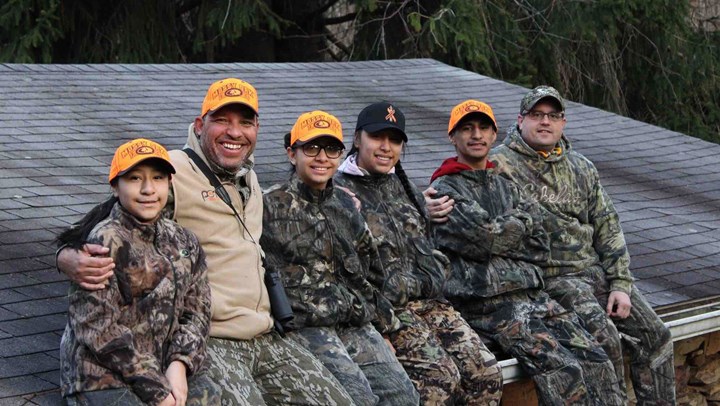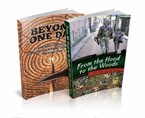
by Frank Miniter - Wednesday, June 7, 2017

How do you convey the spark of wonderment and pounding pulse of excitement you felt when that first pheasant flushed at your feet, cackling and rising into the air as you attempted to shoulder a shotgun and shoot? Whether or not you dropped that bird, you were left shuddering from deep, wondrous, primal things. How do you take such moments in the outdoors and hand them to a kid or adult who hasn’t hunted in that beautiful, pure way? This, after all, is an instant-gratification age.
For answers, or rather a deep method honed to a razor edge, I reached out to John Annoni, an elementary school teacher in Allentown, Pa. The author of “Beyond One Day” and “From the Hood to the Woods,” Annoni started Camp Compass Academy more than two decades ago to use what saved him—hunting, fishing and shooting—to save and mentor disadvantaged inner-city middle- and high-school kids growing up in rough neighborhoods.
Like many kids from tough neighborhoods, John didn’t grow up with his father. His grandmother raised him. On weekends he would go to his mother’s apartment in the projects. “It was a violent and abusive place,” said John, “so I started going out behind the projects and hiding in this little woodlot. I’d sit there in the woods where nobody could hurt me. Pretty soon I saw a squirrel and I started to stalk it. As time went on I got better at stalking and tracking game around that little woodlot. I was safe and happy there until I had to go back to the apartment—Mother Nature was saving me. Later an uncle took me hunting and I found a real connection to the outdoors. Guns, in this very different culture from what I knew on the streets, helped save my life.”
John said he found himself between two cultures, so he decided to take good parts from both to help kids. “A lot of students wonder where I grew up and what color I am,” he often tells people. “New students sometimes ask, ‘What are you?’ I think they’re looking for a role model they can relate to by skin color, so I reply by asking them, ‘What do you think I am?’ After they guess, I tell them, ‘I’m half black and half white but I look Spanish and I eat Chinese food.’ They laugh. I let them know I’m just like them.”
I’ve met John’s students, all of whom were not exposed to hunting until John introduced it to them. Now they want to hunt. I’ve even interviewed former students of his who’ve told me he literally saved their lives. I’ve had them tell me with serious-as-gunshot expressions that without John and the hunting and shooting experiences he gave them, they either would have been shot or jailed.
I asked John for his advice on introducing kids to hunting. He shared six tip-of-the-iceberg hints to consider before even thinking about taking a non-traditional outdoor child (NOC) hunting. In fact, he advises that the hunt won’t even happen if the proper groundwork is not laid.
I use a shooting simulator to show young students at Camp Compass Academy how to properly handle a gun long before they see the real thing. This keeps it fun and interactive. It’s a process—a fun process—don’t rush it.”
■ ■ ■
Editor’s Note: Camp Compass Academy founder John Annoni works to ensure students believe success is possible so that disadvantaged children do not give up their quest for a better life. His book “Beyond One Day” shares more tips for mentoring youth through the outdoor experience. As he notes, “It’s in children’s lives, those that are untouched by the outdoors, where we as hunters and shooters can make the biggest difference.” For more information on the non-profit Camp Compass program, click here. In recent years, John Annoni also launched the Two Million Bullet Campaign. The goal: to find two million like-minded people to go online and sign up to be a “bullet”—a bridge to help a young person cross into the great outdoors as we collectively expose anti-hunters’ stereotypes about the shooting and hunting culture.
As he notes, “It’s in children’s lives, those that are untouched by the outdoors, where we as hunters and shooters can make the biggest difference.” For more information on the non-profit Camp Compass program, click here. In recent years, John Annoni also launched the Two Million Bullet Campaign. The goal: to find two million like-minded people to go online and sign up to be a “bullet”—a bridge to help a young person cross into the great outdoors as we collectively expose anti-hunters’ stereotypes about the shooting and hunting culture.
E-mail your comments/questions about this site to:
[email protected]
Proudly supported by The NRA Foundation and Friends of NRA fundraising.
